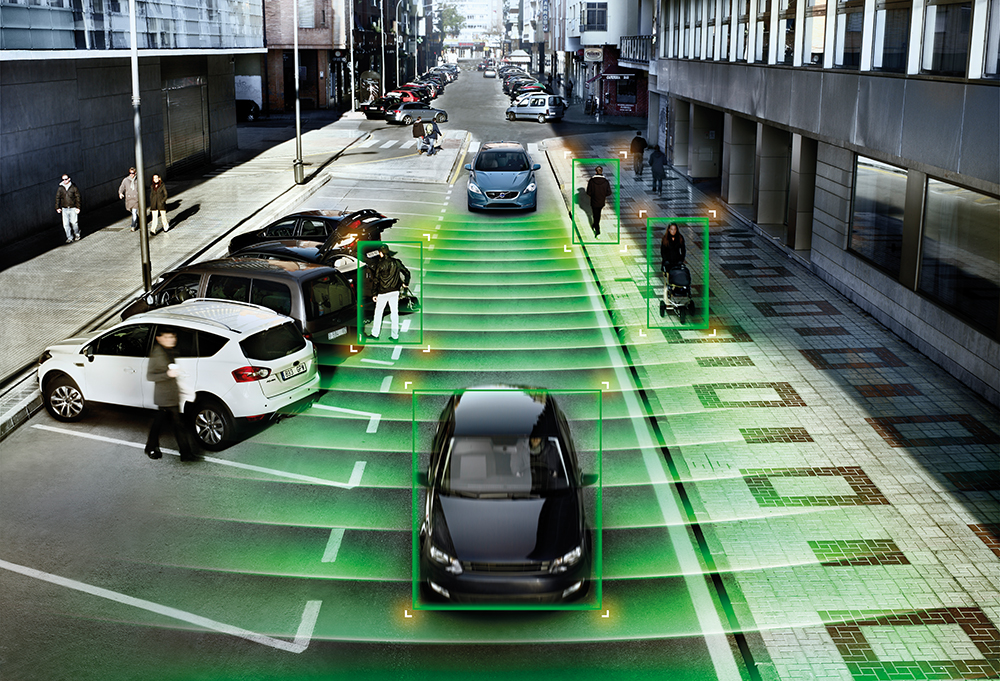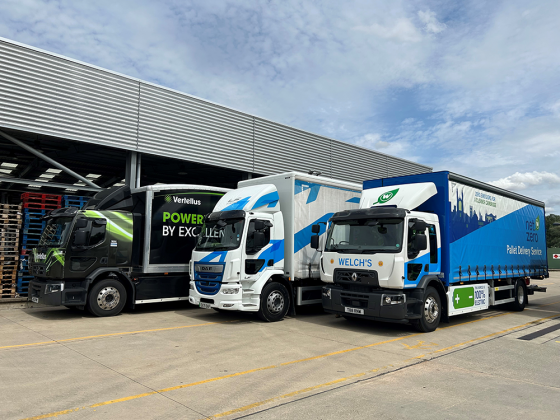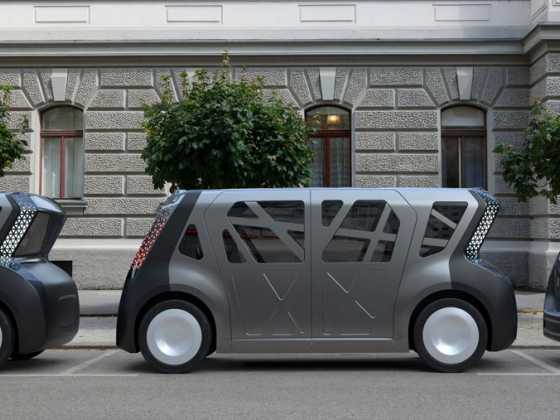Expert panel: Fleet Telematics

Our telematics expert panelists share their thoughts on how technology has helped drive down road emissions, how telematics grows the appeal of electric vehicles, and how autonomous vehicles could benefit fleets in the future.
Road transport contributes about one-fifth of the EU’s total emissions of carbon dioxide (CO2), the main greenhouse gas. With fleets and freight making up a significant portion of road users, organisations operating fleets have become mindful of their contribution to climate change and are taking action to minimise it. The Energy Saving Trust believes it takes three strategies to lower fleet emissions: drive cleaner vehicles; drive them more economically; and drive them less. In order to do this, fleet operators need insight into how their drivers behave behind the wheel, and what types of journeys they do. Telematics gives fleet managers exactly that – data on driving style and routes so they can identify where changes can be made.
There are countless cleaner vehicles on the market these days, but if they are driven inefficiently, by harsh braking, idling or speeding – they will still burn unnecessary fuel and let out more emissions. Identifying drivers that perform that way via telematics means a company can introduce eco driver training, and possibly offer incentives for those that drive the most economically. What’s more, tracking technology will show which routes are unnecessarily long or too congested, so that better route planning can be implemented.
Martin Kadhim from Lightfoot believes that no matter how efficient the vehicle is, the driver is still the most important factor in reducing emissions: “Several years ago our company developed an innovative hybrid system for vans and although it was totally proven under the strictest laboratory conditions, in the real world some customers failed to achieve the promised benefits because of the way the vehicles were being driven. No matter how good the technology, if a vehicle is driven aggressively and inefficiently it will burn unnecessary fuel and give out unnecessary emissions.
Nick Walker from RAC Telematics agrees, saying that: “A significant contributor to emissions is the way in which we drive our vehicles. By improving driving behaviour (encouraging drivers to drive less aggressively), fuel usage is reduced and as a consequence emissions are also reduced. Telematics has been proved to play a key role in making this happen.
Telematics can also be used to monitor driver behaviour and give feedback to drivers on their driving style and, where appropriate, suggest improvements.
“At the RAC, we have seen results as high as 15 per cent in terms of fuel and emission reductions in our own, and in our customers’, fleets.”
Yon Copitch also cites having the technology to identify vehicle faults in advance as making a “marked difference”, as vehicles performing in their peak condition can keep emissions at bay.
Powertrain technology
Engine and drivetrain technology has also advanced greatly to offer a good range of low or zero-emission vehicles, such as electric, hydrogen or hybrid. Whilst adoption of these vehicles is relatively slow, there are around 90,000 plug-in vehicles and vans on the UK roads. And so far 2016 has been a record year for electric vehicles sold.
That said, vehicle range and a limited charging infrastructure is still a barrier for some when it comes to buying an electric vehicle. Yon Copitch from Traffilog says: “Currently, the main barriers to uptake are cost (notably, battery cost), limited range between recharges, long recharge times and a lack of recharging infrastructure. A combination of industry regulation, pilot projects and consumer incentives is being used to encourage uptake in the UK.”
Technology is also greatly helping to put concerns over range and charging infrastructure at ease. Most electric vehicles are connected, using the internet to connect themselves to the outside world. This allows the vehicle to let drivers know where nearby charging points are and keep them updated on battery life. Telematics in electric vehicles can also help with journey planning should the range not be enough to reach the final destination. For example, the system could suggest driving to a train station with a car park with charge points, doing the remainder of the journey on train, and then returning to a fully charged vehicle. All with real‑time information on how trains are running and whether there is traffic on route. This connectivity to the outside world can play a significant role in reassuring those unsure of buying an electric vehicle because of concerns over range and limited charging infrastructure.
Nick Walker from RAC Telematics said: “Electric vehicles continue to grow in popularity due to zero emissions and fuel economy but their appeal remains limited where longer range journeys are required, at the moment. The RAC understands this aspect of electric vehicles and many of our patrols now carry charging equipment. But technology is helping to get the most out of electric vehicles.
One example is smart routing – being able to avoid heavy traffic and also to choose journeys where charging facilities are available. Another is improved battery monitoring which gives advanced warning of low battery state or faulty systems.”
Martin Kadhim from Lightfoot says: “Without doubt, the biggest single challenge for electric vehicles and their appeal is their range; how far they travel before they run out of charge. Vehicle range can be considerably improved by making better use of the energy that’s available in the first place. For example, with Lightfoot’s real‑time in-cab feedback and coaching, vehicle range is improved by 10 to 15 per cent.”
Lucas Ainscough from TU Automotive said: “Battery and charging technology has come on leaps and bounds in the last three to five years and it is this rather than the more obvious consumer facing infotainment tech that will do more to grow the appeal of EVs.”
Taking cars of the road
Taking more cars off the road is arguably the best way to reduce emissions, and new mobility trends are allowing people to re-think traditional car ownership, which, according to research, sit idle 90 per cent of the time. In cities where congestion zones and parking restrictions are a problem, some people are using mobility as a service – using car sharing or short term rental cars, as and when needed. These are often facilitated by apps connecting up to the cars to find their location and do the bookings online. Viewing mobility as a service also means taking into account the big picture of a journey – so rather than using a vehicle to get from A to B, using an efficient mix of public and private transport. Again, technology is enabling this.
Lucas Ainscough from Tu Automotive says: “The trend of using cleaner vehicles, combined with the growth of car sharing and ride sharing service which enable a reduction in total vehicles on the roads, mean that we are moving towards a greener future.
“Taking car club DriveNow as a study, they have rolled out their i3 on the platform so not only have they contributed to a reduction of privately owned cars, they are being replaced by electric alternatives.”
Self-driving cars
Taking the conversation towards the new global push for autonomous cars, our expert panelists give their views on this trend that is enabled by highly sophisticated technology.
Although fully automated cars are not expected to be in use in the UK for about 10 years, the government is keen to ensure that Britain is at the forefront of developing driverless technology. Earlier this year the government announced a £20 million funding boost for research and development into autonomous vehicles in the UK, with projects ranging from new simulation trials for autonomous pods to developing autonomous shuttles to carry visually‑impaired passengers.
In Milton Keynes, the first driverless car has been tested for the first time on UK streets. The trial saw a two-seater LUTZ Pathfinder travel 1.25 miles (2km) through pedestrianised areas of Milton Keynes, reaching speeds of up to 15mph while having to cope with walkers and cyclists for the first time. The cars used virtual maps of the town to navigate the area around the train station and business district. A driver was on board to take over in case of emergency, but otherwise the vehicle drove itself.
Meanwhile, the House of Lords Science and Technology Committee has launched a new inquiry into the future uses of driverless vehicles in the UK, inviting contributions on the potential uses and benefits in contexts such as road transport, farming and even space exploration.
Many major vehicle manufacturers are making rapid progress to developing and perfecting self-driving cars, with Volvo recently announcing the UK’s biggest autonomous driving trial, set to begin in 2017. ‘Drive Me London’ will use real families driving autonomous vehicles on public roads.
In addition, Ford has begun trials of its autonomous vehicles technology at night, to test its capability in complete darkness, and Mercedes-Benz has premiered an efficient and futuristic autonomous driving bus.
Yon Copitch from Traffilog reflects back on the early days of autonomous vehicles: “Back in 1995 the goals for self-driving cars were more modest than they are today. They weren’t called autonomous, but self‑driving. And there was no plan to have cars drive themselves on city streets, just on freeways and highways – on the Interstate. The plan was to bury cables in the pavement over which all the cars would drive and communicate with each other and with the road itself. The goal was to fill the road with cars driving at the speed limit, spaced precisely one meter apart. Ironically that simple system, which we could implement cheaply today, would achieve most of the economic and societal goals being pointed to today to support autonomous cars.”
Autonomous fleets
So will organisations running fleets benefit from self-driving cars? Nick Walker from RAC believes so: “Autonomous vehicles can improve fleet and driver productivity enormously. For car drivers, the work-time lost due to journeys is significant, so the use of autonomous vehicles will make the journey time more productive. For service fleets, time is lost breaking up longer journeys so autonomous vehicles will address that as well. Additionally, self-driving vehicles will reduce risk in the fleet by lowering accident rates. So vehicle downtime will also be reduced. In short, the benefits will be quite enormous.”
Martin Kadhim from Lightfoot believes that in time self driving vehicles will benefit fleets, but that the business case will need to be looked at carefully. He says: “The self driving vehicle adds most value if the person who would have been the driver can do other useful things instead. Those who have emails to answer, documents to write or even calls to make could, in principle, become much more productive. Where this is not the case the benefits are less clear but in time there could still become a strong duty of care argument, especially if self-driving vehicles are shown to have fewer accidents.”
Those that spend a lot of time behind the wheel doing monotonous types of journeys, could seriously benefit from a vehicle that can drive itself, according to Lucas Ainscough from TU Automotive. He said: “If we look at road haulage or the taxi/minicab worlds we see people spending hours and hours behind the wheel doing the most monotonous types of driving, either city driving or endless motorway miles and being able to automate these two functions will relieve a huge burden. With motorway/highway driving being one of the more simple tasks to automate, we can massively reduce the cognitive load placed on truck drivers and thereby reduce accidents; seeing as more than half (52 per cent) of fatal accidents on motorways involve HGVs, despite HGVs only making up 10 per cent of the traffic on motorways, this would be a huge benefit.”
Overcoming hurdles
Whilst the industry is making rapid progress in making autonomous vehicles a viable reality, there are still major barriers to overcome – in perfecting the vehicles and technology themselves, and also in changing people’s mindsets so that they trust the vehicle to drive itself.
Nick Walker from RAC Telematics says it will take a “leap of faith” for anyone to not want to control the car they are in.
Pointing out the “glitches” in technology, Lucas Ainscough from TU Automotive said: “We have, particularly since the start of the smartphone era in 2008, become ever more dependent on technology but this comes with a caveat. None of our devices work all the time, they all have glitches, they all crash and some, not naming any names, spontaneously catch fire; this is obviously an issue and inconvenience when it’s a phone, tablet or computer, but when it is a large 1-2 ton lump of metal and plastic moving at 70 mph we need to be convinced that it won’t kill us.”
Pointing to some challenges facing the technology, Yon Copitch from Traffilog says: “The main problems are that every street, pavement and driveway that will be used by a self-driving car will need to be mapped. Weather is also a problem as cameras and lasers will have a hard time dealing with challenging weather conditions such as thick fog, heavy rain and snow. Then there is the issue of the vehicles responding to the emergency services – even the most advanced prototypes have a hard time interpreting emergency sirens. If they are ever to be allowed onto real streets, autonomous cars will need to be able to respond appropriately if a police officer waves them down, or an ambulance tries to pass.”
Lucas Ainscough from Lightfoot ponders how the technology will interpret certain winding roads and tricky manoeuvres. He said: “I wonder how well the idea of driverless cars – pioneered on large multi‑lane US highways – will work in some of our more challenging European environments. Lightfoot, for example, is based in Devon and we have miles of tight, windy single lane country roads where all sorts of tricky manoeuvres (and negotiations) are required when cars meet each other head on. I can only imagine how an algorithm would cope with some of these situations.”
Insurance
Earlier this year, ministers launched a consultation on changes to motor insurance rules and the highway code to take into consideration self-driving cars. The proposed plan is for insurance law to change so that motorists who drive ‘self-driving’ cars can be insured properly. The ‘Highway code’ and regulations will be changed to support the safe use of remote control parking and motorway assist features.
Speaking about the issue of insurance, Martin Kadhim from Lightfoot says: “Insurance is another practical issue that is likely to cause difficulties, with stories already emerging of Tesla drivers having to agree far higher excesses if they want to use the autopilot functionality. Again, it is not that this is necessarily less safe, but the lack of data makes insurers very nervous.”
Robot vs Human
The panel agrees that there might be issues with comparing a machine’s decision-making abilities, with that of a human. Nick Walker from RAC Telematics says: “While we can program technology to make decisions in much shorter time frames than humans can, and while technology does not get tired and lose concentration, some decisions are much more emotional than fact-based. Imagine being in a situation where to avoid a head-on collision the vehicle needs to swerve right or left. On the left is a bus queue, and on the right is a young mother pushing a baby in a pram. Tough enough for a human to make the call but what would a machine do?”
Lucas Ainscough from TU Automotive agrees, saying that even if accidents were less damaging in an autonomous car than a human-driven one, “it is human nature to be more forgiving of other humans than we are of machines.”
And then there’s the consideration of how autonomous cars will interact with others driven by a human. Martin Kadhim from Lightfoot said: “A computer will drive differently to a person, perhaps better, but certainly differently. We can only guess as to the impact this type of automated driving behaviour will have on all other road users as they have to interact with cars being driven so differently. From our perspective, we suspect it will further promote the safer, more efficient driving style we see from Lightfoot drivers.”
Expert final thoughts
Nick Walker
"While we can program technology to make decisions in much shorter time frames than humans can, and while technology does not get tired and lose concentration, some decisions are much more emotional than fact‑based. Imagine being in a situation where to avoid a head-on collision the autonomous vehicle needs to swerve right or left. On the left is a bus queue, and on the right is a mother pushing a baby in a pram. Tough enough for a human to decide but what would a machine do?"
www.rac.co.uk/business/telematics
Yon Copitch
"The main problem of autonomous vehicles are that every street, pavement and driveway that will be used will need to be mapped. Weather is also a problem, as cameras and lasers will have a hard time dealing with challenging weather conditions such as thick fog, heavy rain and snow. Then there is the emergency services, with even the most advanced prototypes having a hard time interpreting emergency sirens. Autonomous cars will need to be able to respond appropriately if a police officer waves them down, or an ambulance tries to pass."
www.traffilog.com
Martin Kadhim
"We have just kicked off a project to drive the growth of the next generation of telematics technology in electric and autonomous vehicles. The project will look at the use of technology to further link vehicles with the world around them. This will include things like GPS location‑based speed limiting, and automatic remote early-stage fault detection and diagnosis. The objective is to push the boundaries of these benefits to advance the car’s range, safety and environmental impact."
www.lightfoot.co.uk
Lucas Ainscough
"If we look at the current crop of ADAS systems and autonomous cars we can see that they are capable of functioning perfectly well 95 per cent of situations, but it is finessing that final five per cent that is proving to be the most challenging; being able to be sure that the car will behave sensibly in even the most rare and unusual of circumstances. It is this thought that is at the back of a lot of people’s minds when they consider handing over the wheel."
analysis.tu-auto.com






